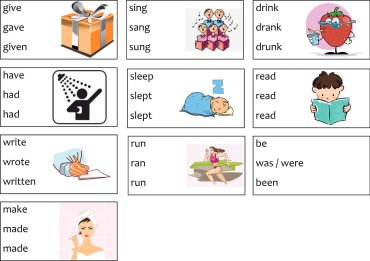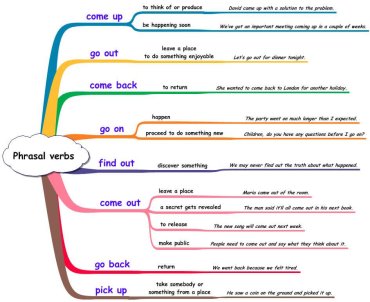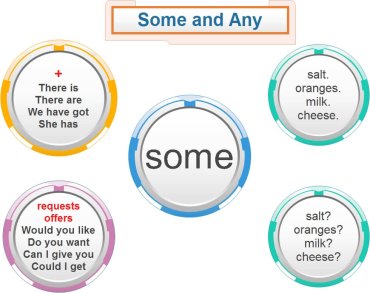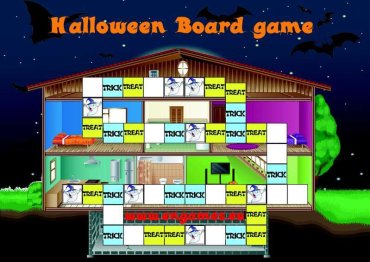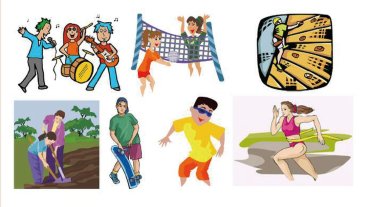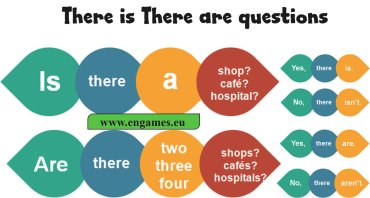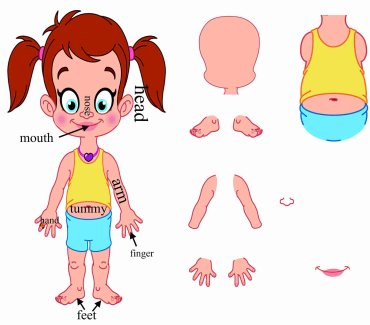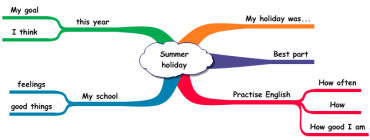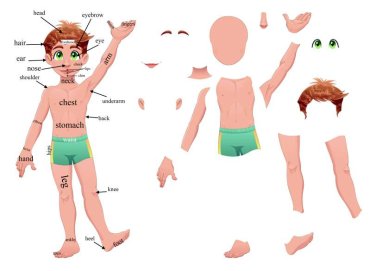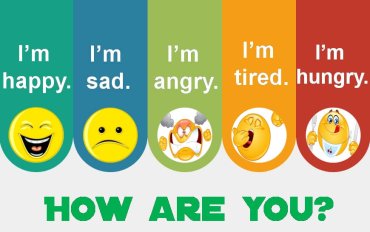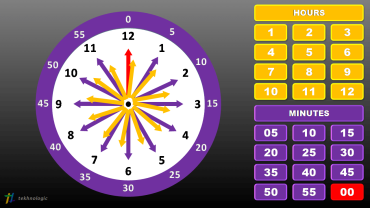This is the first post in a series on irregular verbs. It is called irregular verbs worksheets because in these posts I am going to publish worksheets in which your students can practise irregular verbs. There will be 10 irregular verbs each time and at least four exercises to practise them. Moreover, there will be an interactive version of the worksheets, so your students can practise at home too.
ADVERT:
[showmyads]
In this post your students can learn the past tenses and past participles of the verbs: be, make, drink, have, sing, write, give, read, run and sleep. In the worksheet there are seven exercises to practise the verbs: three crosswords and four fill in the blank exercises.
Irregular verbs worksheet – infographic
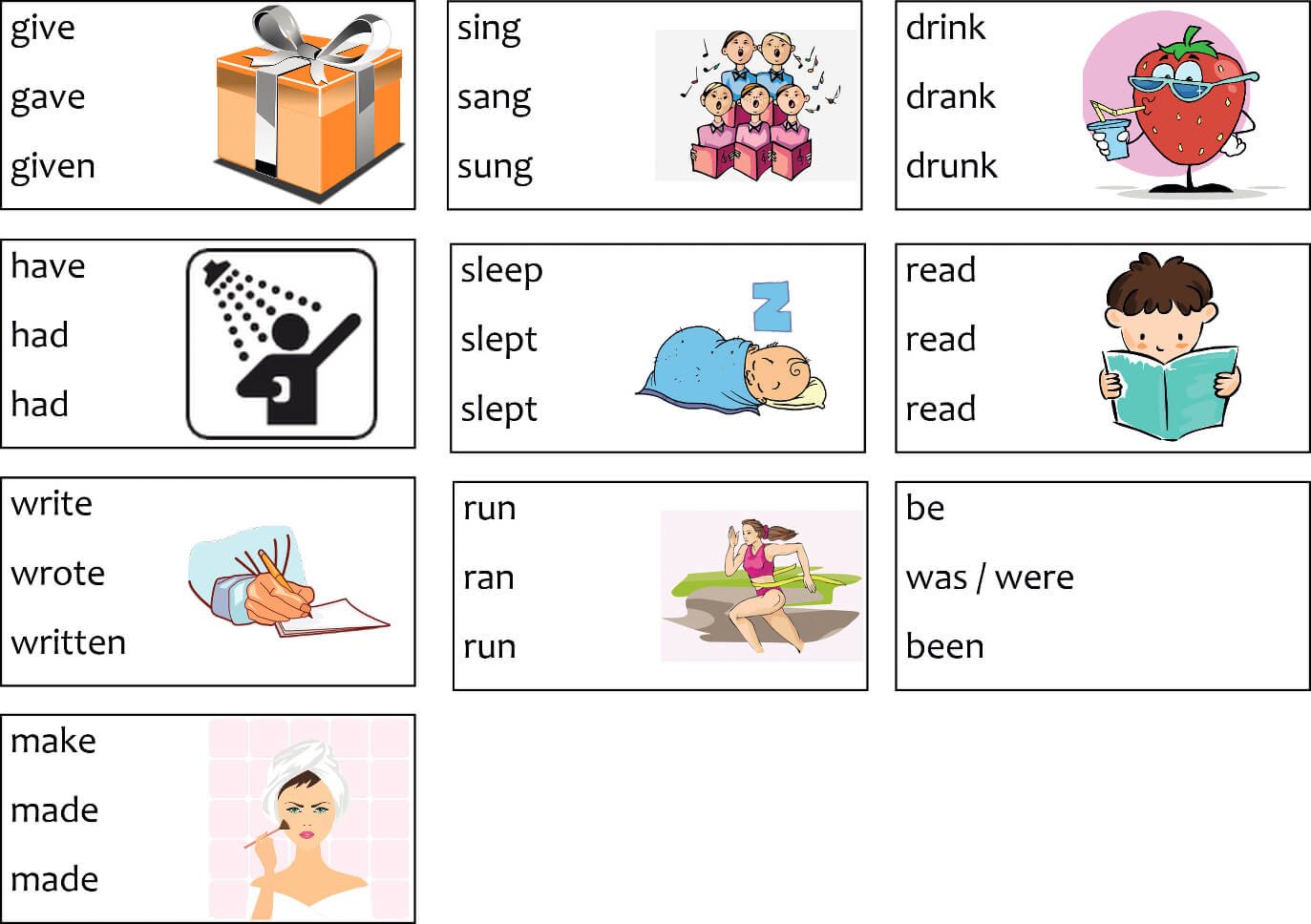
If you use this material in a class, first present the irregular verbs using the infographic. Present the verbs and ask the students to translate the verbs.
Irregular verbs worksheet
[showmyadsa] As I write above there are seven exercises. On the first page, there are crosswords which students should complete by writing the past tense and past participle of the verbs.
Exercises 4 and 5 are simple fill in the blanks exercises. Students should use either the past participles or past tenses of the verbs they learnt.
Exercises 6 and 7 are fill in the blanks exercise again. But this time the students complete questions and once they finish, they could use the questions for speaking. They work in small groups and ask and answer the questions. In smaller print there are additional questions students should ask to make the conversation longer and give students more opportunities to use the target language.
Irregular verbs worksheet – online quiz
To count uncountable nouns in English students need to know the containers they are most often sold or served in. In the textbook I teach at school I need to teach six of these containers: a loaf, a tin, a packet, a glass, a cup and a bar.
In this post you can find a video, an infographic and two games to teach the six containers and their usage. I hope you like the post.
Simple containers – video
ADVERT:
[showmyads]
Simple containers – infographic

You can download the high-resolution image here:
Infographic full sizeSimple containers – games
As the game is in Flash, it will only play on desktop computers. Simple containers – Invaders game
The second game is in Flash and will play only on desktop computers, too. It is called Half a Minute, and your task is to type the correct answer before half a minute runs out. Enjoy.
Simple containers – Half a minute gameADVERT:
[showmyads]
Simple containers – Links
British council has a nice post on containers here.
The phrase USED TO is one of the highly productive chunks in English. I have already published a post on Used to but I have created several new activities since, and I would like to share those with you. So, in this post you will find several USED TO grammar activities which will help you teach this grammar point.
ADVERT:
[showmyads]
In this post there is a song by my friend Chris Barickman, a speaking activity, a game and a grammar worksheet.
Used to – song

Used to – mind map
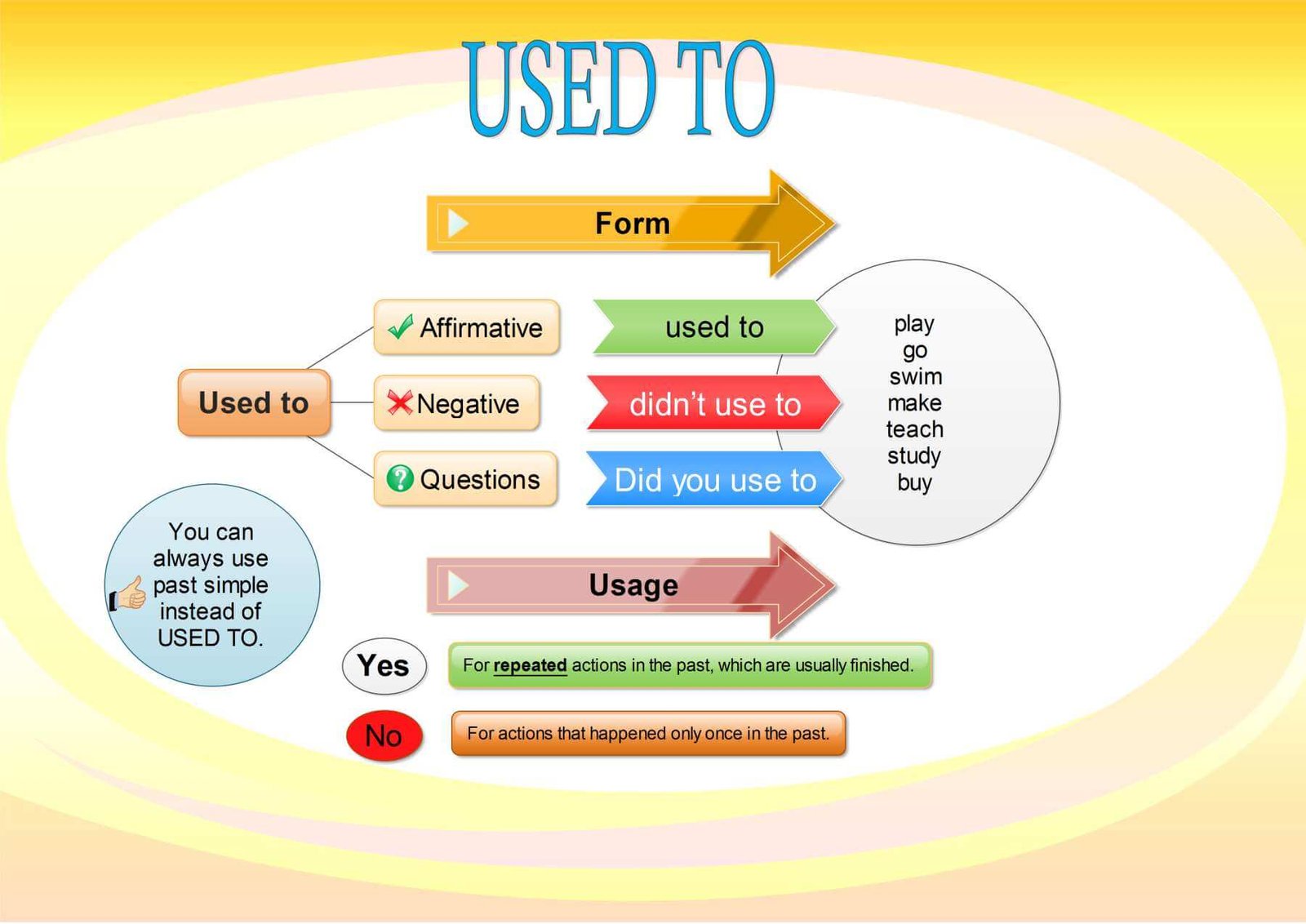
Remember to emphasize that USED TO is used for repeated actions or states in the past.
Used to – speaking activity

Ask the students to look at their worksheet and tick the things they used to do when they were younger. Remind them that they should tick only the activities they used to do often and yes, they can do them now too.
Students work in pairs and tell their partners what they used to do and didn’t use to do.
Then students ask their partner whether he/she used to do the activities in the pictures.
In the end students can write about their partner what he/she used to do.
Used to – speaking worksheetUsed to – grammar worksheet
Used to – games
As the game is in Flash, it will only play on desktop computers.
ADVERT:
[showmyads]
Used to – Penalty game
The second game is in Flash and will play only on desktop computers. It is called On Target, and your task is to choose the correct option and then shoot all the bad cows and ducks. You can shoot one of the bottles on the wall to get a bonus. Enjoy.
Gerund or infinitive – On target gameUsed to – links
There are some great games and exercises at British Council site too.
There is a nice explanation at BBC learning English.
A few days ago the scholars Mélodie Garnier and Norbert Schmitt published a list of most common phrasal verbs in English. Moreover, they listed the most frequent meanings of the verbs. The pedagogical impact of this discovery is really big. Finally we have the list of the phrasal verbs we should teach. You can see the abstract of the article here.
Having the list at my disposal I could not resist and I created the following post. There is an infographic with 8 most common phrasal verbs, two games and a worksheet with 4 exercises.
Most common phrasal verbs – infographic
ADVERT:
[showmyads]

Most common phrasal verbs – games
The second game is called Fling the Teacher. To win the game, you have to answer all the questions by choosing the correct phrasal verb. If you answer all the questions correctly you will fling your teacher. (But I am sure, that he/she will not mind as long as you know all the phrasal verbs 🙂 ). The game is in Flash and it will only play on desktop computers.
Fling the Teacher gameMost common phrasal verbs – worksheet
ADVERT:
[showmyads]
In the worksheet you can find a text which contains all the phrasal verbs. I think the teenagers will love the story 🙂 Then there are comprehension questions.
In task two, students should use the phrasal verbs and complete the questions. Check their answers. Now ask them to choose three questions they would like to ask you. Answer the questions as well as you can. Then the students work in pairs and discuss the questions in pairs.
In exercise three students complete the crossword.
In exercise fours students can complete the text either in writing or orally.
The usage of Some and Any in English is quite simple. Some is used in positive statements, requests or offers and ANY is used in questions and negative sentences. However, many textbooks confuse students by mixing this simple concept with the concept of countability.
In this post I will try to keep the explanation as simple as possible. There is an infographic, an online quiz and two games in this post.
Some or Any – infographic
ADVERT:
[showmyads]

Some or Any – games
As the game is in Flash, it will only play on desktop computers. Some or Any – Penalty
The second game is in Flash and will play only on desktop computers. It is called On Target, and your task is to choose the correct option and then shoot all the bad cows and ducks. You can shoot one of the bottles on the wall to get a bonus. Enjoy.
Some or Any – On target gameADVERT:
[showmyads]
The following quiz can help your students practise Some or Any either at school or at home. The quiz consists of two parts. In the first part, students should complete the sentences with Some or Any. In the second part, students have to match the beginnings and ends of the sentences. The students will be rewarded with a game if they pass. The quiz is in HTML5, so it will play on all desktops and mobile devices.
Some or Any – links
And on Youtube you can see the following great video with the explanation of Some and Any.
Once elementary students master forming questions in the present simple tense, their communicative ability grows by hundreds of percent. Students then can ask nearly about anything, and all of a sudden they can communicate meaningfully. However, for many teachers the questions are a nightmare because only a few students do really learn to form the questions.
To help you and your students I will share a set of activities I have used and which worked really well in my classes. In this post you can find an infographic, a video drill, a speaking activity, two games and an online quiz.
Questions in present simple tense – infographic
ADVERT:
[showmyads] Remind your students that the word order in English is given (SVOMPT) and that they have to follow it. To form a question they need to add the words DO or DOES at the beginning and a question mark at the end.

To form the short answers students have to start with YES or NO, the pronoun representing the subject from the question and DO, DOES, DON’T or DOESN’T. You can tell your students that the word which was at the beginning of the question appears at the end of the answer.
You can see my explanation of the process in the following video:
The following quiz can help your students practise the short answers either at school or at home. The quiz consists of two parts. In the first part, students should match the questions and answers. In the second part, students have to write the short answers. The students will be rewarded with a game after each part of the quiz they pass. The quiz is in HTML5, so it will play on all desktops and mobile devices.
Short answers quizQuestions in present simple tense – speaking activity
ADVERT:
[showmyads] One of the students chooses a picture and the others form questions about the pictures. Their task is to ask YES/NO questions in such a way to find out which picture their partner is thinking about. Speaking activity worksheet
Questions in present simple tense – question words
Start with the following drill. On the first slide students listen and repeat the words. From the second slide on, they have to produce the question words before the native speaker says them. Play the video at least twice.
Now, hand out the following worksheet and ask the students to complete the first exercise with the question words
Present simple worksheetQuestions in present simple tense – WH questions
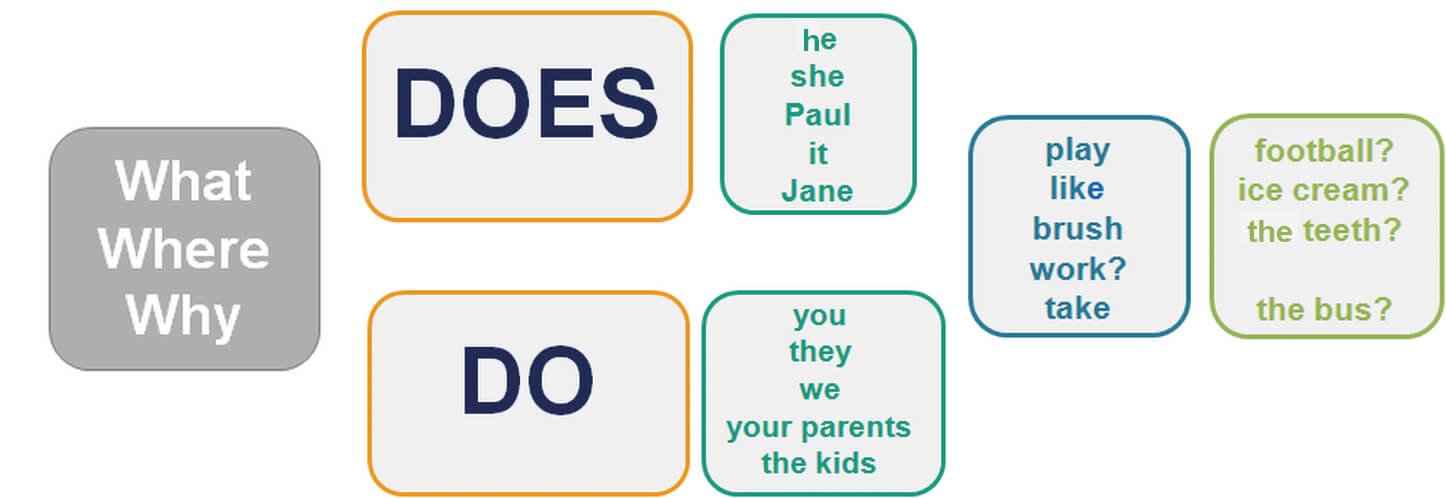
Questions in present simple tense – games
The first game is called Penalty Shootout. In this game you should choose the correct question and then try to score a goal. Good luck.
As the game is in Flash, it will only play on desktop computers. Present simple questions – Penalty Shoot out
The second game is in Flash too, and it will play only on desktop computers. It is called En Garde, and your task is to choose the correct option and then stop the circle as close to the centre of the target as possible. Enjoy.
Present simple questions – En GardeHalloween is coming, and it would be nice if we had a set of fresh activities for this occasion. Children remember everything, and it is pretty embarrassing when you recycle something and the children shout out- “I know this!!! We’ve already done it.” Or, “My sister told me that you did this last year with her.” To help you out a bit, here is a set of new activities for Halloween.
ADVERT:
[showmyads]
In this post you can find a colouring activity for young learners, a new song with lyrics and a Halloween board game. I hope your Halloween lesson goes well.
Halloween activities – song
You can do several things with this song. First, you can ask the students to watch the video and sing along.
Second, you can print the following worksheet and ask the students to listen and complete the lyrics. Play the recording at least twice.
Third, especially with young learners, ask the students to do some physical activity whenever they hear the word “Halloween”.
You can download the lyrics worksheet here:
Halloween song – worksheet
Lyrics:
Halloween Halloween
Spooky kooky Halloween
Halloween Halloween
Creepy freaky Halloween
Witches’ broomsticks fill the sky
While zombies rise from graveyards
Such a gruesome sight on Halloween night
Better hope you don’t die of fright!
Chorus
Moans and groans to chill your bones
A werewolf howls at the full moon
Banshees add to the hullabaloo
You know there’s room in my coffin for two!
Chorus
All alone
The room goes cold
Something slithers in the shadows
Better shut your eyes
You’re in for a surprise
Soon you won’t fear a thing
Chorus
Halloween activities – rap
My friend Jason -better known as Fluency MC– has created the following rap song.
I like it and that is why I created the following activities:
First students listen and complete the following worksheet with the lyrics.
Then ask the students to complete the following mind map with the words from the lyrics. If you teach a group of advanced students you can skip the first step and ask them to listen and complete the mind map:

At the end of the activity you can display the following questions and ask your students to work in pairs and ask and answer the questions.
- What are you going to do on Halloween night?
- What are you going to be?
- Where are you going to go?
- What are you going to wear?
Halloween activities – vocabulary activities
The lyrics above contain a lot of words connected with Halloween. It might be a good idea to exploit them.
Print the following mind map and ask the students to complete it with the words from the song.

You can find the mind map in the following pdf file:
Halloween vocabulary – mind map pdf
Halloween activities – present simple questions
Here is a speaking activity for elementary students. Print the worksheet and hand out the tables.
Students work in pairs or in groups of three. If they work in pairs cut the first page and give each student one of the tables.
If they work in groups of three print page two and cut the paper in three and hand them out.
Students must not look into their partner’s worksheet. They ask questions in present simple and complete their tables.
They must speak English all the time.
Halloween – pair speakingHalloween activities – colouring activity
Young learners of English like to colour. However, every colouring activity should be educational. In the following activity students will practise colours and parts of body.
First, print the worksheet. There are two pages. Students should work in pairs, and within each pair the students should have different worksheets.
Check that the children remember the colours and parts of the body, and ask them to colour the pictures according to the instructions.
Next, ask the students to tell their partners what colours they used. The other student listens and colours the pumpkin in their worksheet. When they finish, they swap roles.
Halloween colouring activity
Halloween activities – board game
In the following game students should practise their speaking and Halloween vocabulary. The rules are simple.

- Students should play in groups of three or four.
- Students place their tokens wherever they like in the haunted house. They throw the dice and move in one direction. They can change direction only at a crossroads or at the end of a corridor.
- The aim of the game is to collect as many ghosts as possible.
- If they land on a ghost, they get a card with a ghost.
- If they land on a TREAT or TRICK, they draw a card.
- TREAT cards contain a task the students have to do (usually telling a story.) At the end of each TREAT card there is a REWARD section which states the maximum number of ghosts the student can get. The other students listen and then decide how many ghosts the student deserves.
- A TRICK card just says whether the student receives or loses some number of ghosts.
- Set a time limit (15 minutes should be fine), and finish the game.
ADVERT:
[showmyadsa]
The picture of the time was purchased at DREAMSTIME.com
What do you like best in this post:
Mistakes that students make should serve as an opportunity to learn. But more often than not students just look at or listen to your correction and pass the opportunity. And that is a pity. As I do not want my students to miss this precious opportunity any more I have come up with a lesson plan which does not allow the students just to pass the common mistakes they make in English, but gives them a fair chance to learn from them.
ADVERT:
[showmyads]
In this post you will find an infographic, a game and a worksheet with the most common mistakes my students made in their essays.
Common mistakes in English – beginning
Print the following worksheet and give a copy either to each student or ask the students to work in small groups and give a copy to each group. Ask the students to look at the first exercise. That the sentences come from the essays written by other students and that they should correct the red places.
Common Mistakes in English – worksheet
Common mistakes in English – infographic
First elicit the mistakes students have found and corrected.
Then display the following infographic and explain the mistakes and the corrections.

You can hand out the infographic if you think your students might profit from it. Once you have explained everything (as we always do), it is time to give your students a chance to use the knowledge. Now they have to do the exercise 2 and complete the sentences with the words from the infographic.
At the end check their answers – be open to more than one correct answer.
Common mistakes in English – game
The second game is in Flash and will play only on desktop computers. It is called On Target, and your task is to choose the correct option and then shoot all the bad cows and ducks. You can shoot one of the bottles on the wall to get a bonus. Enjoy.
I have already published several speaking activities. There is Summer Holiday Speaking activity or School Subjects Speaking Activity. However, this post is different as the speaking activity here is a sample FCE exam speaking test.
The FCE speaking exam consists of four parts. In this post you can find an example of each part and there are instructions how to use them in a class.
FCE Speaking Exam – part one
There are always two students examined at the same time (if there is an odd number of students there are three students.) There are two examiners. One of them speaks and the other does not. She only takes notes of what is said. The examiners are always very friendly.
ADVERT:
[showmyads]
In the first part the interlocutor (the examiner who asks the questions) asks some general questions to get to know the students. Here are some examples of the questions:
Hello, what is your name?
Where do you live?
What do you think of the area where you live?
What kind of music do you listen to?
Has your taste in music changed in the past?
Where do you like listening to music?
FCE Speaking Exam – part two
In this part each student gets two pictures and they have to compare them for one minute. Then they have to listen to their partner and react to what they say. They have about 20 seconds for their reaction.
Examiner: In this part of the test, I´m going to give each of you two photographs. I´d like you to talk about your photograpraphs on your own for about a minute, and also to answer a short question about your partner´s photographs. Candidate A, it´s your turn first. Here are your photographs. They show different activities people do alone. I´d like you to compare the photographs, and say why the people want to be alone. All right?

Then the examiner says: Thank you. Candidate B, what do you like doing alone?
Thank you.
Now, Candidate B, here are your two photographs. They show people being together in groups. I´d like you to compare the photographs, and say why you think people are together in these situations. All right?

Thank you.
Candidate A, what do you think of formal meetings?
Thank you.
FCE Speaking Exam – part three
The third part is a cooperative task. In this task the students have to take turns and agree on the answer together. This part lasts about 4 minutes.
The examiner says: Now, I´d like you to talk about something together for about three minutes. There is a youth club in your town and you would like to offer to teenagers some activities they would like. You have to choose form the activities in the pictures. First, talk to each other about why you think people would like these activities and then decide which two activities you would offer to people and why. All right?
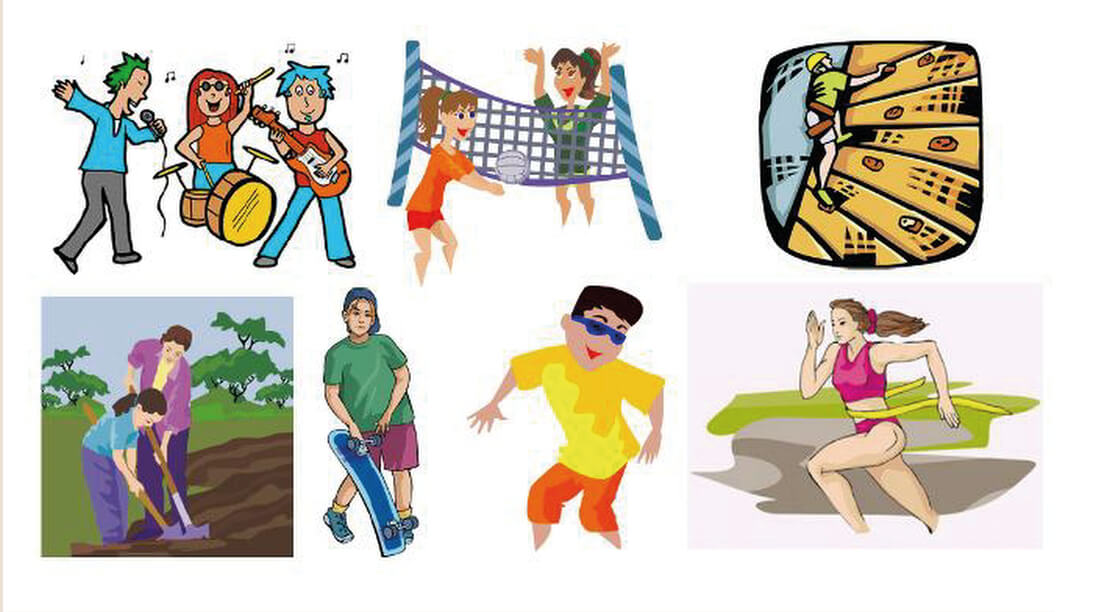
Why do teenagers like these activities? Which two activities will your youth club offer?
FCE Speaking Exam – part four
In this part the examiner asks the students several questions connected with the topic in part three. This part takes between three and four minutes.
Examiner:Which of these activities do you enjoy doing?
Which activities do you hate doing?
Are there enough activities for teenagers in the area where you live?
What are the problems teenagers in your area have?
What should be done, so that teenagers would cause no problems?
Are there any activities which aren´t suitable for teenagers?
(The examiner will add these as he/she thinks appropriate:
What do you think?
Do you agree?
And you?)
FCE Speaking Exam – Classroom notes
You can either ask your students to work in pairs or in groups of three. If they work in pairs, one of them asks and the other answers. They swap roles after the given time. If they work in groups of three, one of them is the interlocutor and he/she reads the instructions and times the parts.
ADVERT:
[showmyadsa]
The teacher should monitor and note the mistakes students make to deal with them later in the lesson.
You can download the full worksheet here:
Youtube is one of the most popular websites on the internet. 4 billion videos are watched every day there. Therefore we should not ignore it and try to use it to teach English. In this post I take one of the Youtube videos and I build the whole lesson around it. It is the video of Susan Boyle´s first performance and it not only gives you a chance to improve your students´ knowldedge of English, it also allows you to discuss some serious questions like ageism.
ADVERT:
[showmyads]
In this post you can find the Youtube video and a worksheet with a set of questions.
Susan Boyle – worksheet
Print the following worksheet (one copy for each student).
First, ask the students to work in pairs and discuss the questions from activity 1. Give them about three minutes to do this. When they finish ask several students the questions and listen to their answers.
Then play the video and the students have to complete the exercises 2-4.
Here is the key to exercise 2: dream, love, young, song, tigers, hopes, dream, dream, weather, life, different, dream.
Play the video twice to give the students a chance to absorb the video while doing the tasks which are not that easy.
Once they finish, ask the students to choose three questions from exercise 5 and ask you. Answer the questions and well as you can. Thus you will demonstrate the way your students should speak and at the same time you will tell your students something about you. In this way you might get closer to them and they will get some time to think about their own answers. Be honest in your answers, students, especially teenagers, hate insencere teachers.
After the three questions, ask the students to work in pairs and discuss the questions. Then elicit the most interesting answers.
Susan Boyle – more YOUTUBE lessons
You can find one more video activity here. There is another video, this time with a short poem. Enjoy
ADVERT:
[showmyadsa]
Please, could you answer the following poll.
Which activity do teenagers enjoy most in lessons?
Irregular verbs are an evergreen in TEFL. There are a lot of them and students have to memorise them. There seems to be no way around it. However, I still try to come up with something that will make this hard work easier for my students. And this time I try to teach 31 irregular verbs in two lessons using simple rhymes.
ADVERT:
[showmyads]
In this post you can find a worksheet with the short rhymes, an interactive quiz where students can practise their knowledge of irregular verbs, an interactive game and a worksheet with two exercises. I hope you find the activities interesting, useful and effective.
Irregular verbs – rhymes
Start the lesson with the following rhymes. The verbs are organised into rhyming sets and a simple short story is added. This should help the students remember the irregular verbs.
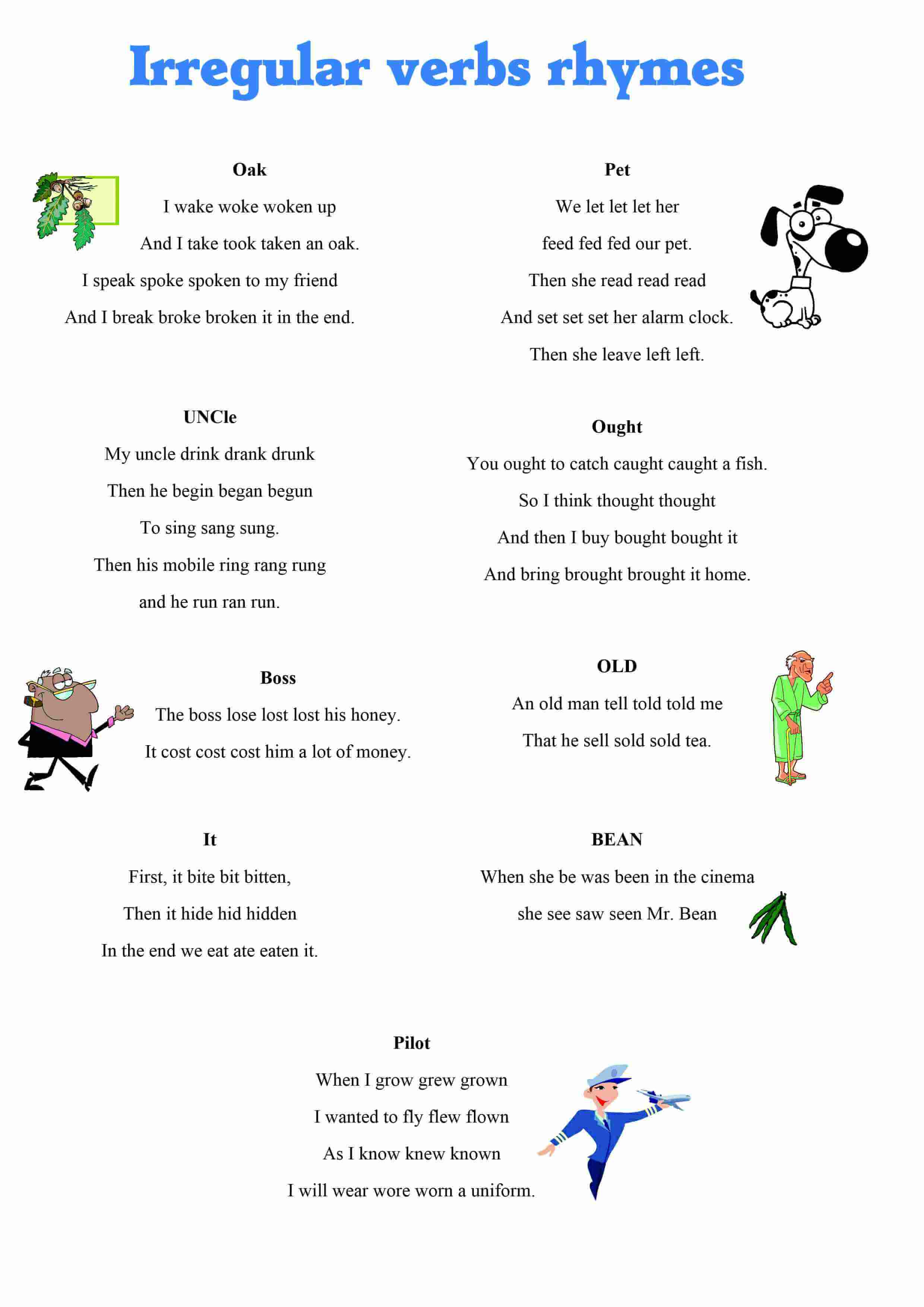
In the lesson, ask the students to read the rhymes aloud. Then translate the stories and tell them to memorise 4 of them. In the following lesson check that they have learnt the rhymes and ask them to memorise the rest of the rhymes.
Here you can find the pdf file with the rhymes for easier printing:
Irregular verbs rhymes
Irregular verbs – worksheet
Once your students learn the rhymes, it is time to concentrate only on the irregular verbs. Print out the following worksheet:
In the first exercise students should complete the mind map with the verbs they remember from the rhymes. They have to write the verbs only on the branches belonging to the appropriate rhyme. Check their answers.
In the second task students have to write the past tense and past participle of the verbs given.
Irregular verbs – quiz
The following quiz can help your students practise the irregular verbs either at school or at home. The quiz consists of two parts. In the first part, students should write the past tense and the past particples of the verbs. In the second part, students have to drag the correct verbs into the sentences. The students will be rewarded with a game after each part of the quiz they pass. The quiz is in HTML5, so it will play on all desktops and mobile devices.
I think that your students will love usind the following game. Their task is to click the correct past tense and past participle. While the first round is easy, the others are very difficult indeed.
ADVERT:
[showmyadsa]
Irregular verbs – links
You can find a list and several interactive activities at British Council site.
Irregular verbs – your opinion
Which post on irregular verbs is the best?
In my opinion the modal verb CAN is one of the easiest grammar points in English to teach. That is why I have not produced a post on this topic yet. However, this is going to change, as I am in need of one and I am going to share it here with you.
In this post you can find a simple mind map explaining the usage of the modal verb CAN. Then there are two speaking activities and an interactive quiz to give your students a chance to practise the grammar.
Modal verb CAN – songs
Having taught the modal verb CAN yesterday I added these two songs. Both of them are from British Council pages and they serve as a great introduction of the affirmative sentences and questions.
Here is the song I can run.
And here you can find a great song to introduce questions with CAN which is called Can a Flea Climb a Tree.
Modal verb CAN – mind map
In the last week I created two mind maps about the verb CAN. However, I felt that the first one was unnecessary complicated and therefore I decided to replace it with this one.
ADVERT:
[showmyads]
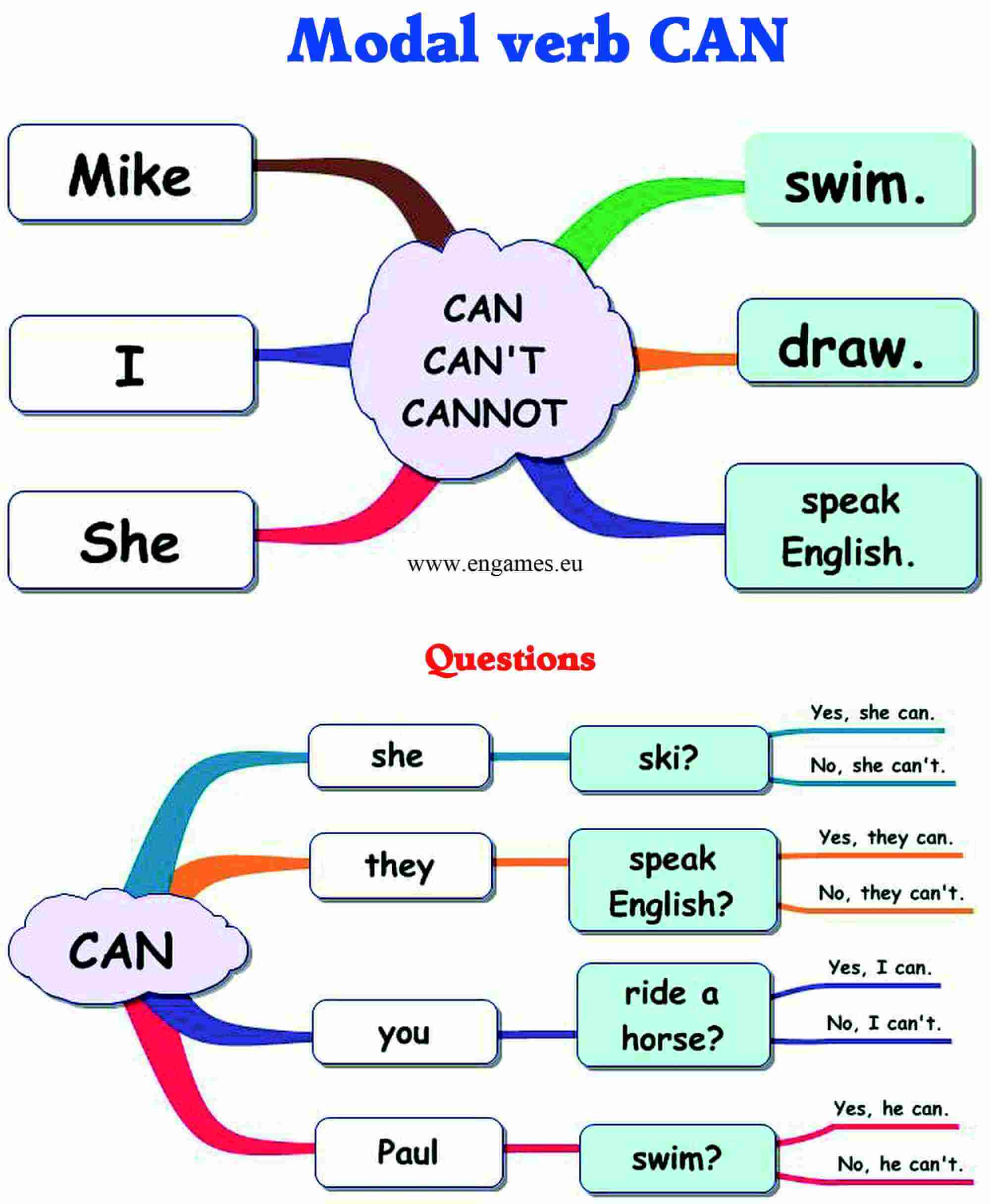
If you are interested in the first version of the infographic, you can download it here:
Modal verb Can explanation
Modal verb CAN – speaking activities
In this part I would like to share two speaking activities. For the first one you need to download and print the following worksheet.
Can pdf speaking
Now you can choose what you will do with it. You can either cut the worksheet and give each student just one picture and ask them to write the questions with can below the picture. Then check their questions. Next, ask the students to stand up and mingle and ask their classmates whether they can do the activity.
If you do not like mingling activity you can print one worksheet for everyone and ask them to write the questions. Then check their questions and ask students to work in pairs and ask and answer the questions in pairs.
ADVERT:
[showmyadsa]
The second speaking activity is called LIAR. Prepare 4 sentences with the modal verb CAN and say them aloud. Now tell your students that one of them is a lie and your students have to guess which one. Now, ask your students to write 4 sentences with the verb CAN and one of them must be a lie. Let the students work in groups of 4. One student reads all 4 sentences and the others write down which sentence they believe to be a lie. Then another student reads and so on. At the end all the students say which sentence was a lie and they see who guessed it.
Modal verb CAN – quiz
The following quiz can help your students practise the modal verb CAN either at school or at home. The quiz consists of two parts. In the first part, students should match the pictures and the sentences. In the second part, students have to complete the sentences with the missing words. The students will be rewarded with a game after each part of the quiz they pass. The quiz is in HTML5, so it will play on all desktops and mobile devices.
Sometimes easy does it. Two days ago I was assigned to teach a short dialogue to a group of students with learning disabilities and problems. I created a set of three activities and I did not held any high expectations. However, it turned out that the students liked the activities and many of them actually learned to give simple directions. Therefore, I decided to share the activities here.
ADVERT:
[showmyads]
In this post you will find an unusual, although very effective, drill which I call vanishing drill. Then there is a worksheet with a gapfill exercise and a speaking exercise in which the students consolidate their knowledge. This time there are no interactive exercises, but I hope you will like it anyway.
Giving simple directions – video
The following video contains the vanishing drill. Play the video and ask the students to read the text. After 11 seconds one or two words vanish and the students read the text aloud again. At the end of the three minutes you can be pretty sure that they will know the dialogue.
Giving simple directions – worksheet
After going through the drill it might be a good idea to revise the prepositions of place too. You can do this here, or you can use any other materials you like.
Seat the students into pairs and print the following worksheet and hand it to students so that each student in the pair has a different copy. Ask the students not to show the worksheet to their partner. Tell them to use the phrases from the drill to find out where the places listed below the map are. They should write the words into the worksheets.
Giving simple directions – worksheet
ADVERT:
[showmyadsa]
Once they finish they should show their map to their partner and check their answers.
Then the students complete the exercise 2 so that the dialogues are in accordance with the map.
I have always believed that questions are one of the most important things in a language. That is why I devote quite a lot of my teaching time to teaching questions. I have already written several posts on teaching questions:
- Forming questions in Past tense
- Questions with like
- Questions with WAS and WERE
- Basic Questions
- Questions with HOW
ADVERT:
[showmyads]
And this time I would like to share with you several activities and worksheets on how to teach questions with THERE IS and THERE ARE. I have used all these activities with my students and they worked.
There is There are questions – infographic
Start the lesson with explaining the grammar. Do not complicate the matters. Just say that we use this phrase when we want to know whether something is somewhere. Allow your student to use the following infographic during the follow-up activities to make sure that they use the correct form.

You can download the pdf file with two infographics here:
There is there in questions
There is There are questions – Speaking activities
There are threes peaking activities I have created.
In the first one, print the following worksheet for every student. First, ask them to write the names of the facilities under the pictures at the top of the picture. Then think of one of the pictures and tell the students they have to ask There is/There are questions and find out which picture you are thinking of.
Then they work in pairs. One of them thinks of a picture and their partner tries to find out, using THERE IS/ THERE ARE questions. When he/she manages to guess the picture they swap their roles.
For the second activity, you need to print the worksheet twice. Cut out the towns 1-8. Hand out the pictures to your students so there are always at least two copies of the same town in the group (of course, there can be more copies if your groups are really large.) The students must not show their pictures to anyone and they have to find someone with the same picture. They have to ask THERE IS/THERE ARE questions.
There is/There are questions – Speaking worksheet
The third speaking activity is called The same or Different? Print out the following worksheet and cut it in the middle. Students work in pairs. Each has one half of the worksheet and they must not show it to their partner. They ask THERE IS/THERE ARE questions and their task is to find out whether the corresponding pictures are the same or different.
Same or different pdf worksheet
ADVERT:
[showmyadsa]
THERE IS THERE ARE questions – quiz
The following quiz can help your students practise the THERE IS/THERE ARE questions either at school or at home. The quiz consists of two parts. In the first part, students should match the beginnings and ends of the questions. In the second part, students have to complete the questions and the answers. The students will be rewarded with a game after each part of the quiz they pass. The quiz is in HTML5, so it will play on all desktops and mobile devices.
Giving directions in English is one of the most useful functions there is. Everyone understands that this is the function they are likely to use on the street, literally, and therefore the motivation is usually quite easy.
To be able to give directions you need to learn a set of phrases which you later combine into a conversation. To teach the phrases we offer you the following. A simple drill (teaching the basic phrases), an infographic, several worksheet activities and an interactive quiz.
Giving Directions in English – Video
First watch and repeat the phrases and then produce the phrases before the native speaker says them.
ADVERT:
[showmyads]
Giving Directions in English – Infographic
It is always a good idea to give students a handout with all the phrases you want them to learn. Thus they can revise the vocabulary and there is higher chance that they will learn the phrases. Here is a colourful infographic with the phrases from the video.
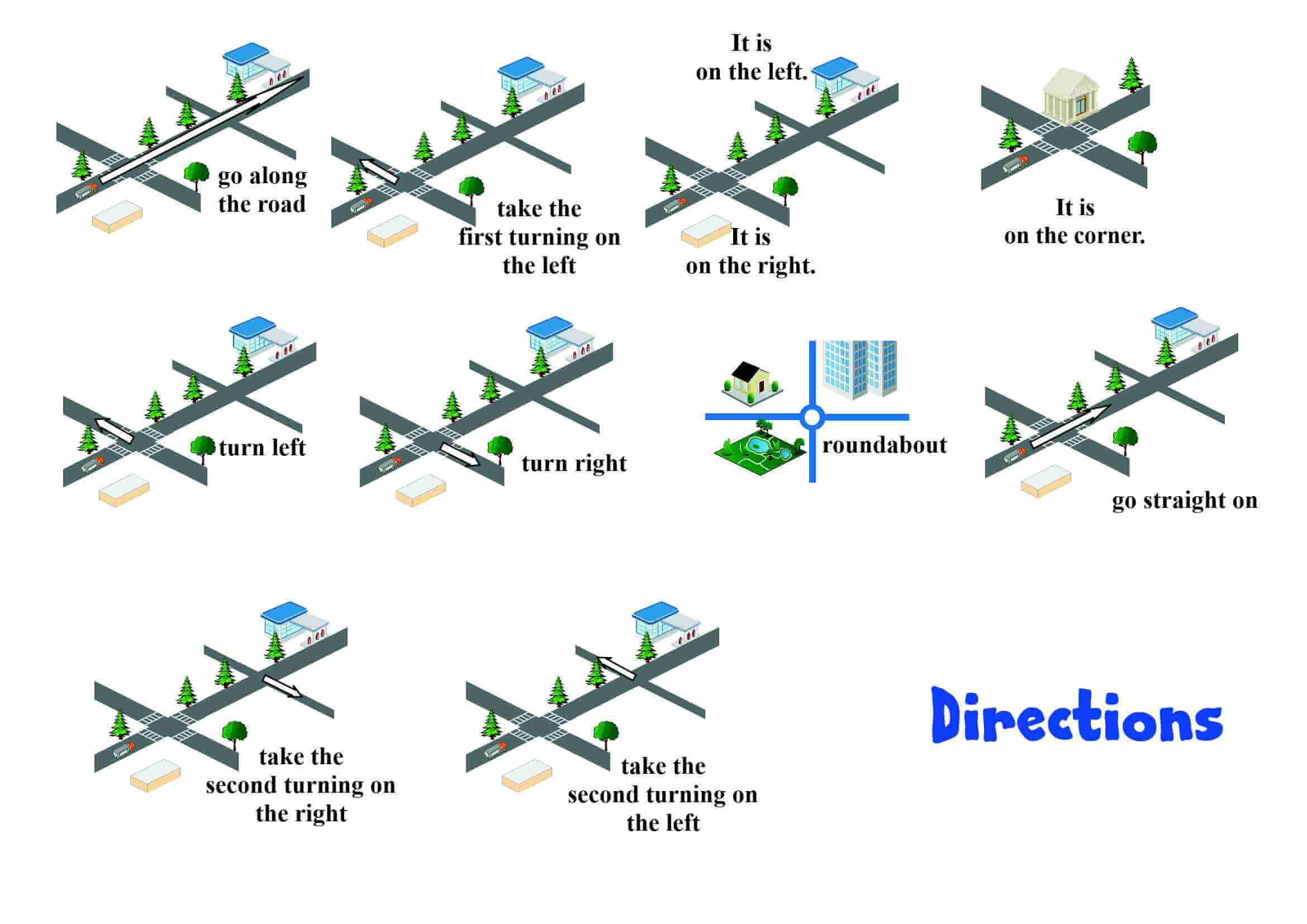
You can download the full-size picture here:
Directions – full size picture
Giving Directions in English – Worksheet and quiz
First of all I would love to recommend the following worksheet by Mary Glasgow plus. In this worksheet students practise their divisions and directions too. You can download extra instructions for the same worksheet here.
Directions for Maryglasgow magazine
The following worksheet gives students a chance to use the new phrases. Print the following map and give one to each student. The students draw a trail into their map (from the start to any place they like) and then they give instructions to their partners who must draw the same trail into their map. At the end they compare their maps and discuss any misunderstanding.
The following quiz can help your students practise giving directions in English. They can do it either at school or at home. The quiz consists of two parts. In the first part, students should match the phrases and the instructions. In the second part, students have to type the missing words in the phrases. The students will be rewarded with a game after each part of the quiz they pass. The quiz is in HTML5, so it will play on all desktops and mobile devices.
Giving directions – links
There are some wonderful materials on giving directions at British Council site. Check them out.
Recently Fluency MC and I worked on a post about body parts. In the post we presented about thirty parts of the body. We used a wonderful rap song by Jason Levine, an infographic and a quiz to teach these words.
Then Jules from English Through Music Madrid contacted me and informed me that he has a new song on body parts for young students of English. I immediately loved the song, and we agreed that I will create a post on it.
In this post you will find that great song, an infographic, a revision video and a quiz with two games. We hope you will find all these useful.
Body Parts Vocabulary – song
Here is a song by English Through Music Madrid. First watch it with your students and then ask them to point to the body parts they hear.
Next, the students can sing along.
At the end of the lesson I would recommend that they listen to the song and complete the following lyrics:
Body parts for young learners
ADVERT:
[showmyads]
Body Parts Vocabulary – infographic
Here is an infographic with all the parts from the song. It is suitable for presenting the vocabulary and for practising it. After you present the parts, drill the pronunciation and then ask the students to cover the picture on the left and label the parts on the right.
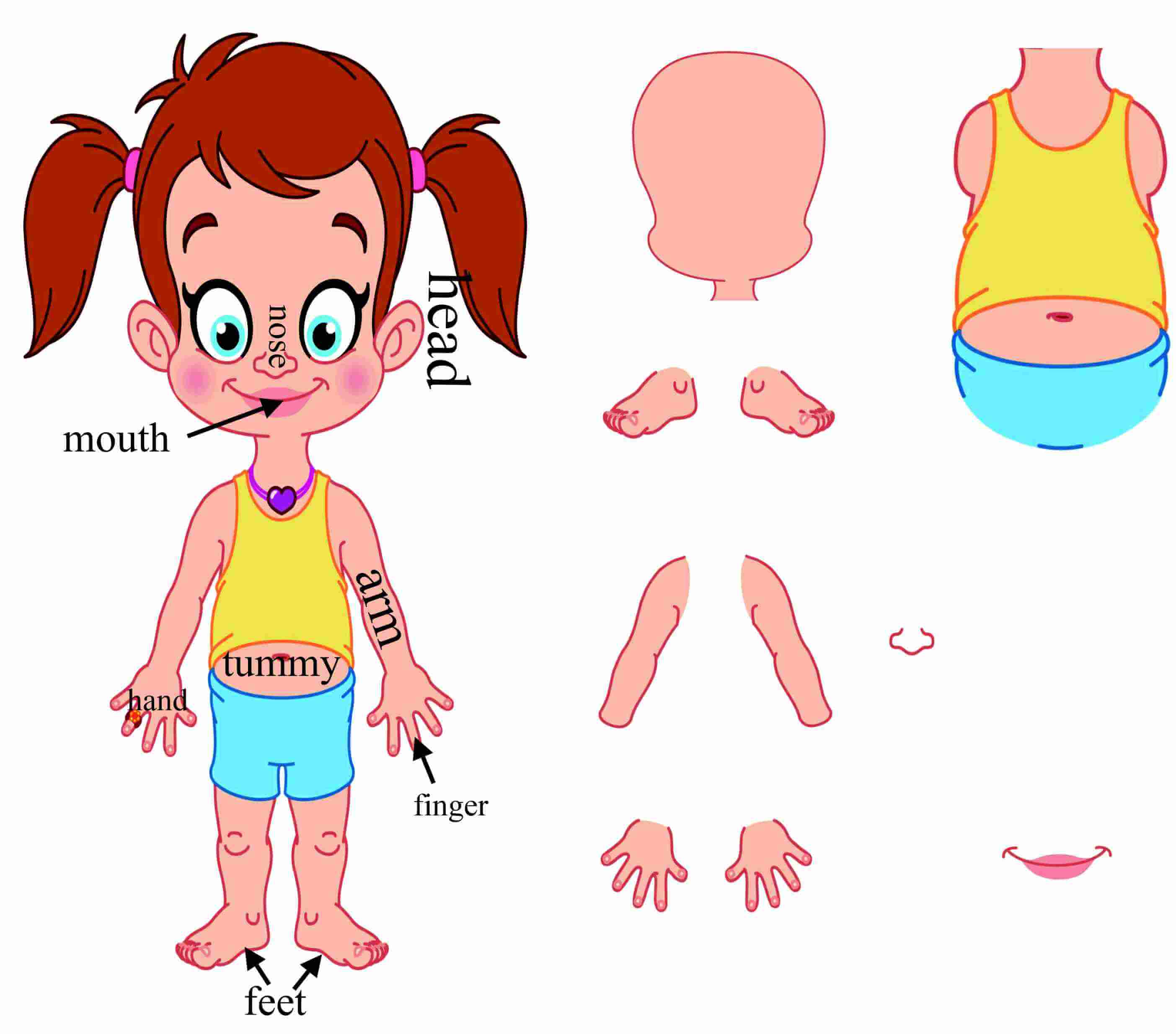
Body Parts Vocabulary – quiz
ADVERT:
[showmyadsa]
The following quiz can help your students practise the body parts. They can take the quiz either at school or at home. It consists of two parts. In the first part, students should match the words and the pictures. In the second part, students have to write the words. The students will be rewarded with a game after each part of the quiz they pass. The quiz is in HTML5, so it will play on all desktops and mobile devices.
Body Parts Vocabulary – revision video
If you want to revise the vocabulary quickly in class this video is one of the best ways to do it. Ask your students to take a piece of paper and something to write with and play the video. The students have to write the name of each body part before it is displayed. They have about 12 seconds for each word.
The school year is starting and the summer holiday is over. Students are returning to their classrooms and we have to teach them. And I think that many of us would like to teach better than last year. So let’s start with a great speaking activity about the summer holiday.
ADVERT:
[showmyads]
The original idea comes from Larry Ferlazzo and you can find the original worksheet here. Larry was so kind to allow me to use his idea and worksheet and modify them. In this post you will find a video, a worksheet and instructions how to use them.
My Summer Holiday – video
Start with the following video. Ask the students to read, listen and repeat the sentences as instructed in the film. Play the video at least twice and do not worry if the students are not able to repeat some of the phrases in full. It is enough if they try.
My Summer Holiday – worksheet
You can find the original worksheet by Larry Ferlazzo here. Larry was so kind to allow me to change the worksheet and use it here.
My summer holiday worksheet
Print the worksheet so that the text is on one side and the colourful mind map is on the other.
Ask the students to complete the worksheet with their own ideas and experience. In some cases they can find several suitable expressions in the brackets but they can use their own words if they want to. There are several gaps with no help and students have to use their own words there.
ADVERT:
[showmyadsa]
Once students complete the worksheet, they work in pairs and read their version to their partner. When they finish, ask them to have a look at the mind map on the other side of the paper. Explain that the mind map sums up the whole text. Demonstrate that you can easily retell the text using the mind map.
Ask the students to work in pairs again and retell their Summer Holiday story. Change pairs and students retell their story again. Do not prevent students from looking at the original worksheet if they feel they need to. They will copy the phrases and thus learn them.
Now it is time to play the video again and the students should be able to remember much more than the previous time. Play the video at least twice in the following lessons.
For a long time I felt that I was missing a post on this site on parts of the body. But I wasn’t inspired enough to close this gap. Fortunately, a few days ago Jason Levine from FLUENCY MC published a wonderful video dealing with the relevant vocabulary. It got me started. This post is another result of a fruitful partnership between Engames and Fluency MC.
ADVERT:
[showmyads]
Engames and Fluency MC have cooperated on a number of posts in the past. Together we created four posts on irregular verbs based on Fluency MC’s popular video. We’ve also created posts on Collocations with the Verb HAVE, on the Gerund or Infinitive, and on Parts of Speech. And here comes the latest fruit of our cooperation – Parts of the Body.
In this post you will find the song, an infographic, a quiz and a game that will help you learn or teach the vocabulary.
Parts of the body – song
This is the wonderful song by Fluency MC. I recommend that you listen to it, then sing and perform it together with your students.
ADVERT:
[showmyads]
Parts of the body – Infographic
I was looking for a suitable picture for a long time, and I feel this one is perfect.
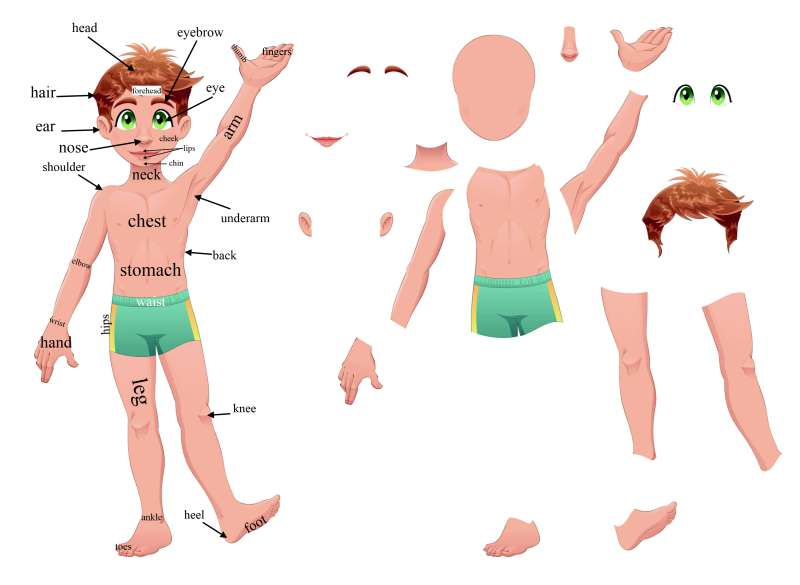
What to do with it? Print it and hand it out, then check that your students can pronounce the words correctly. Once you finish, ask them to cover the picture on the left and write the names of the body parts on the right. In this way they will practice all the parts.
If you want the picture in full HD you can download it below:
Parts of the body – full image
Parts of the body – Quiz
The following quiz will help your students practise the parts of the body. They can do it either at school or at home. The quiz consists of two parts. In the first part, students should match the pictures with the names of the body parts. In the second part, students have to click on the correct part of the body. The students will be rewarded with a game after each part of the quiz they pass. The quiz is in HTML5, so it will play on all desktops and mobile devices.
ADVERT:
[showmyadsa]
To get to the second part of the quiz, you have to click on the right next to the advert at the top during the game Angry Finches!!!
This game is in Flash and will play only on desktop computers. It is called On Target. Your task is to choose the correct option and then shoot all the bad frogs and ducks. You can shoot one of the bottles on the wall to get a bonus. Enjoy.
Parts of the body – On target game
Parts of the body – links
You can find nice activities to teach or learn Parts of the Body at British Council site.
Yesterday English Through Music published an awesome song called “How are you?”. As the song is easy to remember and sing, I contacted Jules and asked him for a permission to write a post around the song. He kindly agreed and here you can see the result.
ADVERT:
[showmyads]
This post is mainly for beginners or very young learners of English. It contains the song, an infographic and a simple quiz with games. Moreover, there are several suggestions how to exploit this wonderful materials more.
How are you? – song
The following song was written and published by English Through Music. You can find their website here and there are more wonderful songs at Youtube English Through Music channel.
First listen and sing along:
Other activities you could do:
a) ask the students to perform an action for each of the adjectives (happy – smile, angry – pretend to be angry, etc.)
b) ask the students to listen and draw a picture for each adjective.
c) ask the students to mingle and ask each other “How are you?” and their partner must answer.
I am sure there are many more activities you will come up with. If you do, please share them with us.
Moreover, English Through Music promises to come up with an action video for the song soon.
Past simple and continuous – infographic
Here I have created a simple infographic for learners to take home with them. It presents all the vocabulary taught in the song in a simple and clear way. Pupils can use it to revise the vocabulary at home.
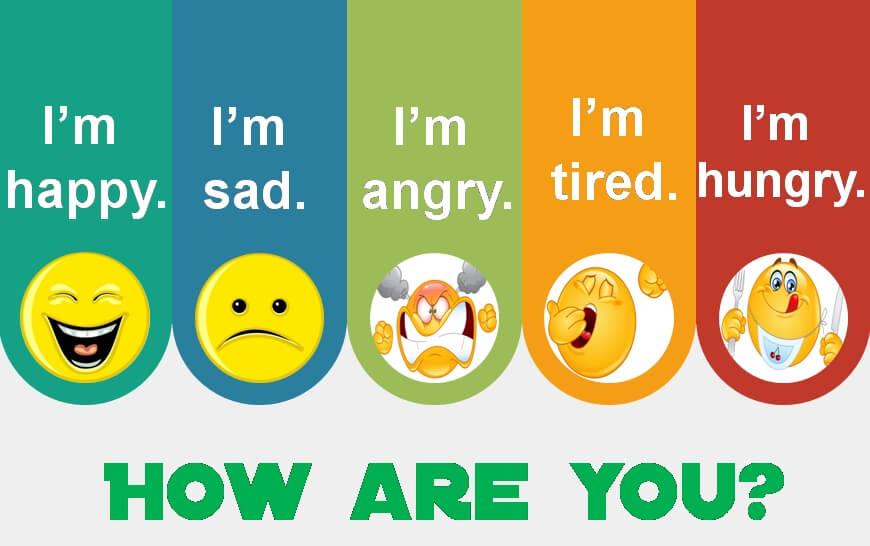
How are you? – Quiz
Another way in which students can practise what they learnt at home is the following interactive quiz. Of course you can use it at school, too.
The quiz is in HTML5, so it will play on all electronic devices.
ADVERT:
[showmyadsa]
In the first part, students match the pictures and the adjectives. If they succeed they will be rewarded with the game called angry finches.
In the second part they have to write the appropriate adjective into the gap provided. If they pass this quiz too, they can play the game called Math Pop and practise their Maths.
A few days ago Tekhnologic published a wonderful post on Telling time in English. What I liked immediately was the powerpoint presentation which was capable of showing the time on a clock with hands. I asked for a permission to modify the presentation and use it on my blog which was kindly granted.
In this post you can see the result of the cooperation between Engames and Tekhnologic. The post contains the modifie powerpoint presentation, a video, a mind map and a quiz to help you teach telling time in English.
Telling time in English – infographic
I have created the following infographic for the post the first post on telling time. As it proved incredibly useful form my students I will place it here again.
ADVERT:
[showmyads]
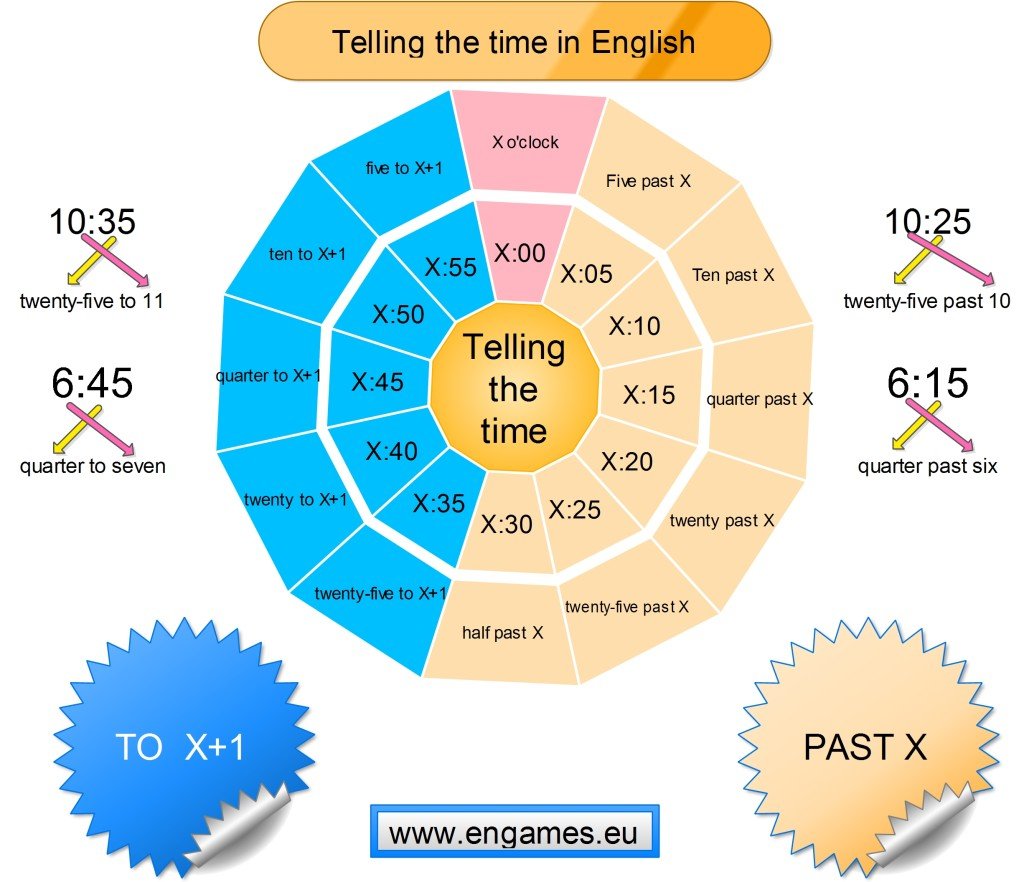
Print out the image and hand it out to your students and teach them how to use it. You can find the details how to use the infographic at Telling time in English.
Telling time – powerpoint presentation
And now comes the time to use the awesome powerpoint by Tekhnologic. It is superb for checking that the students understand how to say the time. You can dowload either the Powerpoint presentation or you can use the HTML5 one and use it online. It is up to you.
Presentation in HTML 5
Presentation – PPT
Telling time – How to use the presentation
I suggest the following way to use the presentation. First use the first slide and demonstrate the times by clicking the buttons on the right. Emphasize that if you click a blue button you have to choose the hour-1.
Once you feel that your students understand the concept hand out the following worksheet.
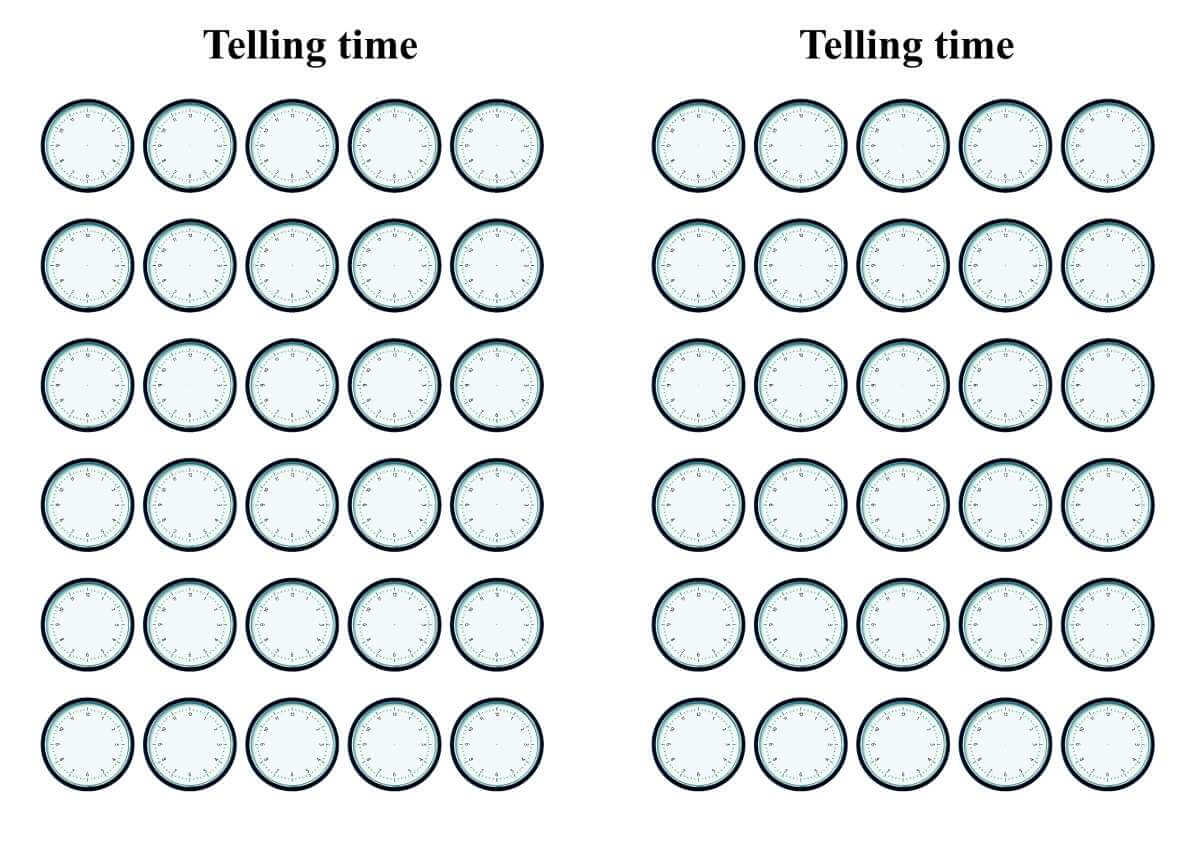
You can download the full image here:
Clock dials – full image
Now display the second slide and ask the students to draw the hands into the worksheet. Then ask one of the students to click the right time on the screen. The others check their answers. Go on like this with all the other slides but the last one.
ADVERT:
[showmyadsa]
The last slide should serve as a way of practising. You can make up a time and then display it on the last slide. Or you can ask the students to work in pairs and make up some times and then dictate them to their partners who should draw the hands into the worksheet. It is up to you.
You will find some more wonderful ideas at Tekhnologic website here.
Telling time – Quiz
The following quiz is in HTML5 and your students can do it either at school or at home or on their mobile devices. The quiz will play on all of them.
Click the buttons below and then you have to click on the two correct hands to form the given time.
Telling time – quiz
Telling Time – additional activity
I seldom append my posts, but this time I felt that I have to add an activity. After doing all the activities above in my class, I realised that I would love to have there a simple quiz which all the students could do. So I created the following video.
Print the picture with the clock dials and ask the students to watch the video and draw the hands. There are sounds which tell the students when a new time appears and when they can check their solutions. The activity went really well. I hope you will find it useful too.
Telling Time – links
You can find several extremely useful activities at British Council site. Enjoy.

